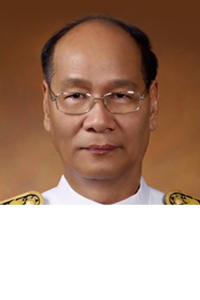
Eleven years ago this month, Thailand made a laudable achievement by moving from the category of a lower middle-income country to an upper-middle-income country.
To many, that progression was taken as an assurance that Thailand, in just a matter of time, would be on its way up to the status of a high-income country. This optimism was based on the impressive performance of the Thai economy from 1952 to 2010, a period during which the country enjoyed average GDP growth of 6.2% per annum.
Nevertheless, the trajectory of the Thai economy has reversed direction. The 10-year period after 2011 saw sluggish GDP growth, averaging only 2.4% per annum, and recently Covid-19 and war in Eastern Europe worsened the negative economic conditions. This warrants concern about the dim prospects of moving out of the middle-income trap (MIT), a condition where a country attains a certain income level and then gets stuck there.
Some macroeconomists are wary that Thailand may be trapped for the long haul. One plausible explanation is that it has failed to adjust its macro-economic development strategies to fit the economic dynamism of today.
Its economic development strategies are still guided by Hirschman's unbalanced growth theory, which is not without its critics. The economy is guided by central economic development agencies, which provide economic incentives for large businesses, investors, and wealthy entrepreneurs in the forms of income and capital gains tax breaks coupled with other indirect benefits such as business protection or market monopolies. The theory is that the financial benefits of the investors will eventually trickle down to the citizens. However, this trickle-down economics generally has not produced the hoped-for effects of reducing wealth inequality in Thailand but only increased it.
Perhaps the most important obstacle to long-term economic prosperity is its institutional weaknesses. All economic development policies have been formulated and strategic choices have been made by heavy-handed central government agencies. Local government organisations of all types are shackled, thus capable of playing only slight, if any, roles in moving the country out of the MIT.
Khon Kaen University (KKU) held a public policy advocacy forum at the Siam Kempinski Hotel in Bangkok on 21 June. The forum, which was chaired by Narongchai Akrasanee, chairman of the University Council, was simultaneously telecast through Facebook live. In his view and that of many participants, which included leaders or representatives of political parties, administrators of local governments, academics and mass media, highly centrally controlled economic development has not only hindered the country's economic progress but the touted trickle-down effects have not been able to distribute the benefits to the lower economic levels. Based on this economic milieu, the forum recognised that local administration organisations (LAOs) in Thailand have a critical role in driving economic development. The forum, therefore, advocated a policy that Thailand capitalises on the untapped function of LAOs to galvanise the economy and push the country out of the MIT.
Escaping from the MIT requires strong political will on the part of those national leaders who are visionary, transparent and effective in providing strategic direction. Vision is important so that the strategic roles of the public sector in providing public goods and services, which must be responsive to citizens' needs and inducive to long-term economic competitiveness, can be properly mapped out. Moreover, transparency and efficiency are necessary to avoid rent-seeking and ensure the most efficient use of economic investment.
Political will is operationalised through the Four S's: Statement, Structure, Staff, and Strategies.
First, the top political leadership must provide a strong and clearly defined policy statement that is convincing and supportive.
The leadership must announce clearly and declare often that locally led economic development (LLED), which has proved successful in the United States and China, will be the new paradigm of Thai economic development.
More specifically, all local administration organisations (LAO) in Thailand will be responsible for and tasked with promoting economic well-being for the citizens in their jurisdiction, thus legitimising their role in economic development.
Second, there is no need to create a new organisational structure for policy transformation and implementation. The research conducted by the College of Local Administration of KKU revealed that many of LAOs not only have the technical capacity but have already effectively engaged in economic development. Third, the current staff of the LAO must be reoriented and endowed with entrepreneurial skills. Finally, devising LLED strategies is a continual process. The central government may want to experiment with a certain strategic approach before it is rolled out to the rest of the country.
Some of the strategies may be linked to the geographical features, natural resources, or human resources in the areas. For example, promoting tourism may work well only for places with nice beaches or serene and idyllic natural environments. Improving farm products would be limited to some agricultural areas.
These are inward-looking strategies where the LAOs can capitalise on untapped resources. There are outward-looking strategies that can be tested in other localities. For example, the national government must grant autonomy or even provide incentives for some LAOs, particularly targeting the lagging areas, to attract capital funds and human resources with technical know-how and entrepreneurial skills from areas outside of the LAO. Some LAOs may want to utilise both inward-looking and outward-looking strategies. In any strategy, however, laws must be passed, flexible directives must be broadly written, and a minimum of 35% of the national budget must be allocated to LAOs as an initial investment. Further, authorisation for LAOs to discretely seek loans from financial institutions as initial funding for investment in economic development projects that are economically feasible must be given.
One way to address this is for a visionary political party to announce their intention to partner with LAOs to attack this issue, through specific inclusion of the process in their policy platform. The people want to see concrete answers from their politicians and not the vapid platitudes that have become the norm.
